"When I left England, I couldn’t even walk in the streets; when we moved to New York, I kept walking around all tense, waiting for someone to say something or jump on me. It took me two years to relax. Now I can walk out my door and go to the restaurant. How good it is! People come up to you, ask for your autograph and say ‘hello’, but they don’t bother you."
A warm December had just begun when John Lennon declared his love for New York, a city that had given him the security that he had never appreciated during his time as a Beatle. Traveling between London, Amsterdam, Montreal, Manila, Paris, San Francisco, and Tokyo, he had lived alongside bodyguards, policemen, and road managers who defended him from Beatlemania.
New York felt like a safe place for him and his family, though Lennon never could have predicted that the city's reassuring magic would be disrupted when one of his fans pointed a Charter Arms 38-caliber gun at him outside his apartment in the Dakota on the Upper West Side. On December 8, 1980, Lennon died, but a legend was born. To this day he remains one of the most famous slain performers in rock history.
The following summer, on August 19, 1981, Lennon's wife, the renowned artist Yoko Ono, sent a letter to local institutions, gallery owners, artists around the world, and influential friends in New York to ask for their support of her campaign to name a Central Park nature oasis in memory of her husband, writing: “It is the place where John and I last walked together. It will be known as Strawberry Fields.”
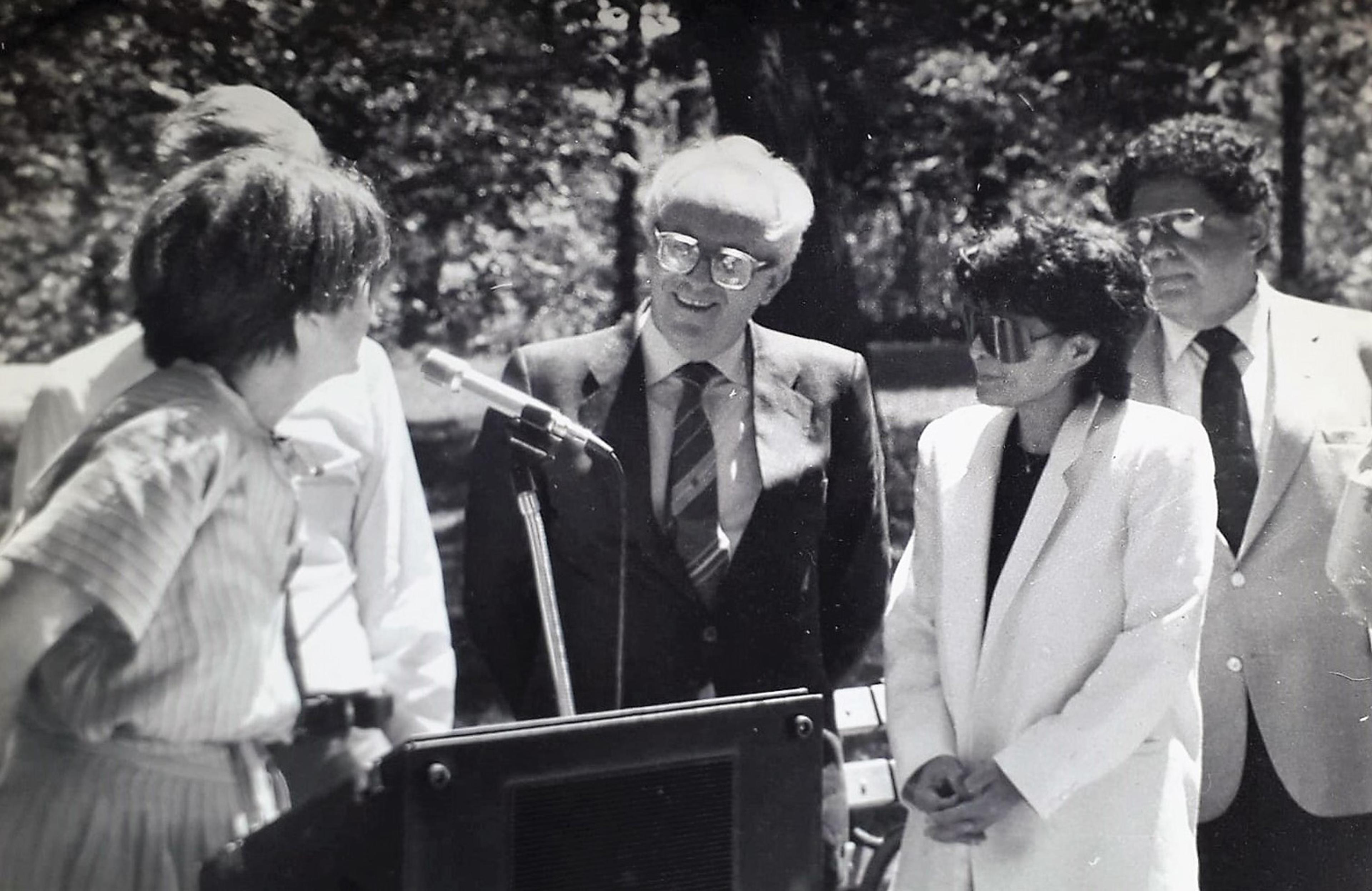
Giuseppe Castaldo and Yoko Ono at the opening of Strawberry Fields in Central Park. Courtesy of the Castaldo Family
The next year, New York City Mayor Edward I. Koch and Henry J. Stern, a member of the New York City Council, approved Ono’s request and decided that an area of Central Park should be named “Strawberry Fields” after the place in Liverpool that Lennon loved most. Two years later, on March 21, 1984, Ono inaugurated construction on the tear-shaped oasis dedicated to Lennon, a project for which she herself allocated one million dollars. On October 9, 1985, the day John would have celebrated his forty-fifth birthday, Strawberry Fields officially opened in Central Park.
The New York memorial dedicated to Lennon is a garden of peace. At Ono’s specific request, the area is replete with plants, flowers, shrubs, and bushes sourced from more than one hundred countries around the world: a bronze plaque lists all the countries that donated part of their botanical heritage for the creation of this peaceful oasis. Designed by the architect Bruce Kelly (1948–1993), a member of the Central Park Conservancy’s Management and Restoration Planning Team, Strawberry Fields boasts the presence of an elegant Italian circular mosaic donated to the New York City Council by the City of Naples in the early 1980s. The work is a reproduction of a Pompeiian mosaic then housed in the Archaeological Museum of Naples: the mosaic of the Casa del Citarista (the House of the Citharist), which is currently on view at The Metropolitan Museum of Art.
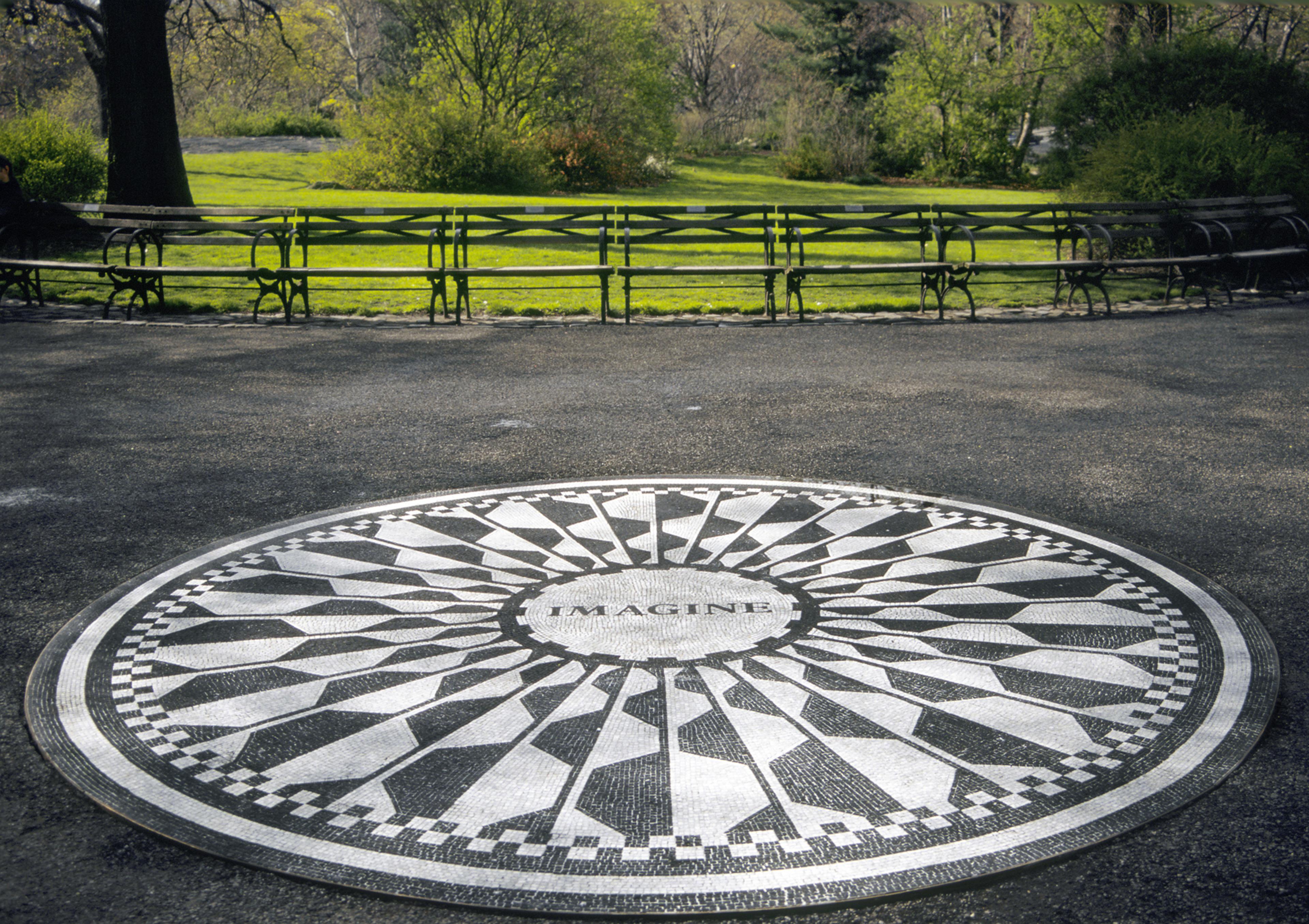
Imagine mosaic in Central Park’s Strawberry Fields. Courtesy of the Central Park Conservancy
Made by Antonio Cassio with his brother Fabrizio, the Central Park mosaic was the subject of much correspondence between Ono and Giuseppe Castaldo, who proposed the mosaic and financed it through the Naples Tourist Board, which he helmed. After the devastating earthquake of 1980, Naples was emerging as a new epicenter for the contemporary art world, in large part due to the efforts of dealer and curator Lucio Amelio and the relationships he facilitated between European and American markets. The mosaic further bolstered the artistic relationship between Naples and New York, linked under the leadership of two Italians across oceans: Neapolitan mayor and artist Maurizio Valenzi and Italian-American Mario Cuomo, governor of the state of New York.

Former New York Parks Commissioner Henry J. Stern joined Yoko Ono and Giuseppe Castaldo at the laying of the Imagine mosaic in Central Park. Courtesy of the Castaldo Family
In the center of the mosaic stands the title of Lennon’s most famous song, “Imagine.” Ono gave Castaldo a silver box inscribed with a dedication: “To the City of Naples and its people. With Love, Yoko Ono Lennon, 1985.” This magic box binds Vesuvius and Manhattan, bearing witness to the connection between Naples and New York in the name of music and art, and in memory of John Lennon.
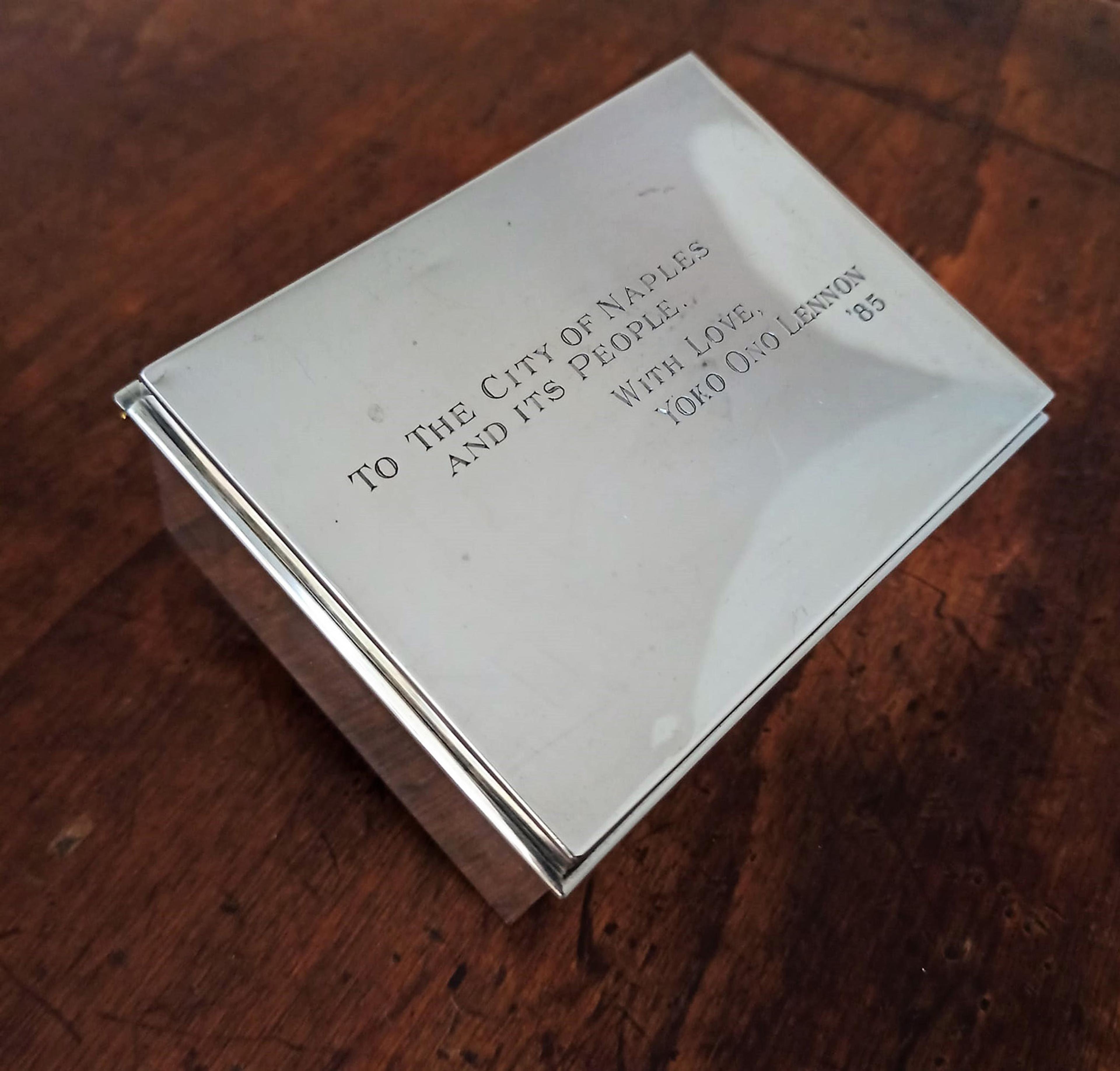
Yoko Ono’s gift to Giuseppe Castaldo dedicated: “To the city of Naples and its people.” Courtesy of the Castaldo Family
From Naples to New York
In February 2024, the striking ancient mosaic with the head of Medusa encircled within a circular scale design that inspired the Imagine mosaic traveled from the National Archaeological Museum of Naples, Italy (MANN) to The Met. The mosaic is in the Museum’s Roman court as a generous loan from MANN until August 2027.
In antiquity, however, it served a completely different role. Created around 50 BCE, the mosaic paved the floor of a small room with a rectangular pool just off the central court (atrium) (ala 54) of the House of the Citharist in Pompeii, Italy (also known as the House of L. Popidius Secundus Agustianus, and L. Popidus Ampliatus). Opening onto the Via Dell’Abbondanza, a primary street in ancient Pompeii, the house was one of the largest in the city, encompassing almost an entire block by the first century CE. It was named after a bronze statue found in another section of the house depicting the young god Apollo playing the cithara, a stringed musical instrument similar to a lyre.
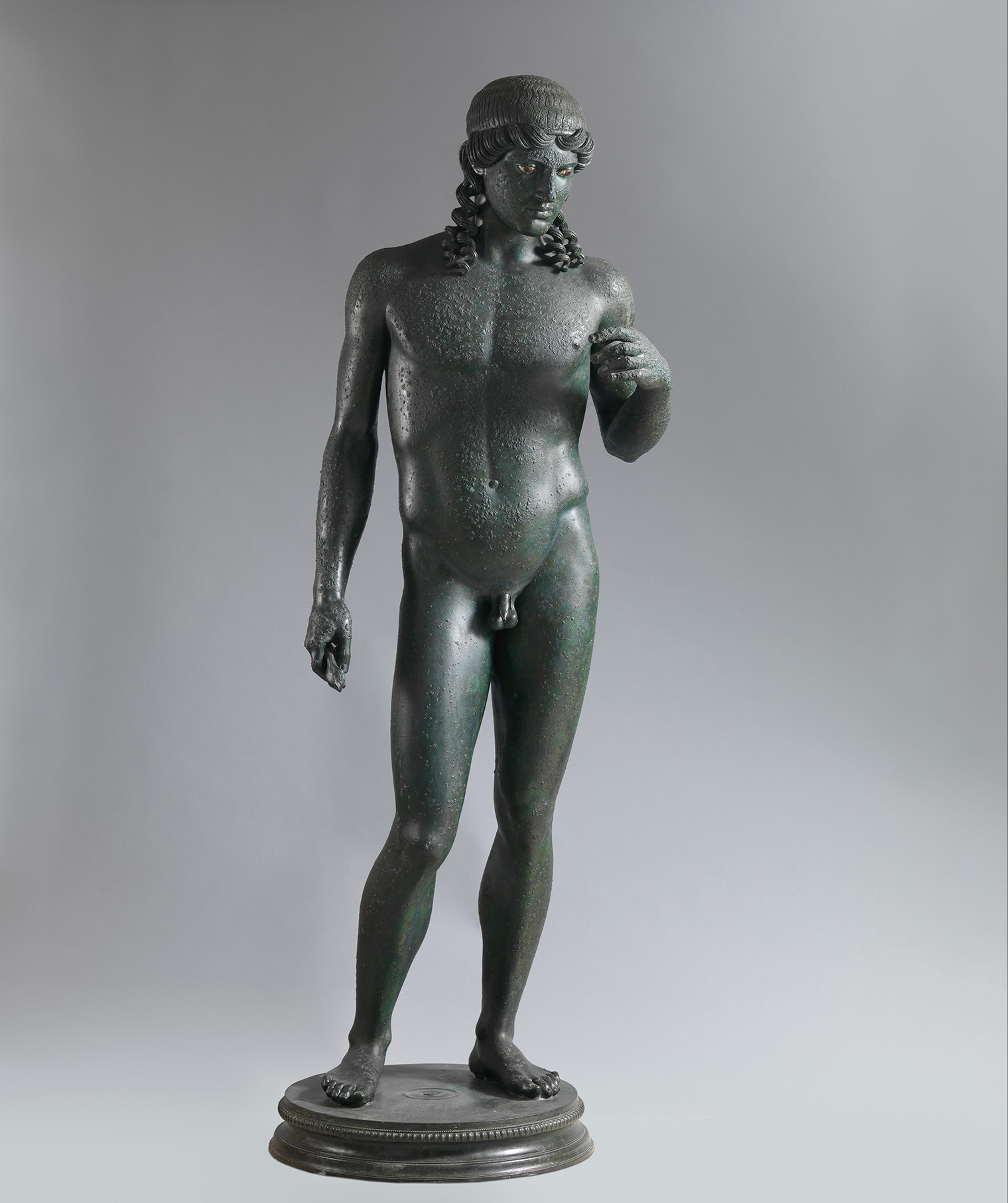
Museo Archeologico Nazionale, Naples. Apollo Citharista, Roman, ca. 50 BCE. Bronze, 158 cm. After a Greek original from Argos, ca. 450 BCE. Excavated from the House of the Citharist, Pompeii (I, 4, 5 and 25, peristyle 32). Inv. 5630.
The famous Neapolitan archaeologist and museum director Giuseppe Fiorelli excavated the house in the mid-nineteenth century, and on April 26, 1867, he removed the mosaic and transferred it to the MANN.[1]
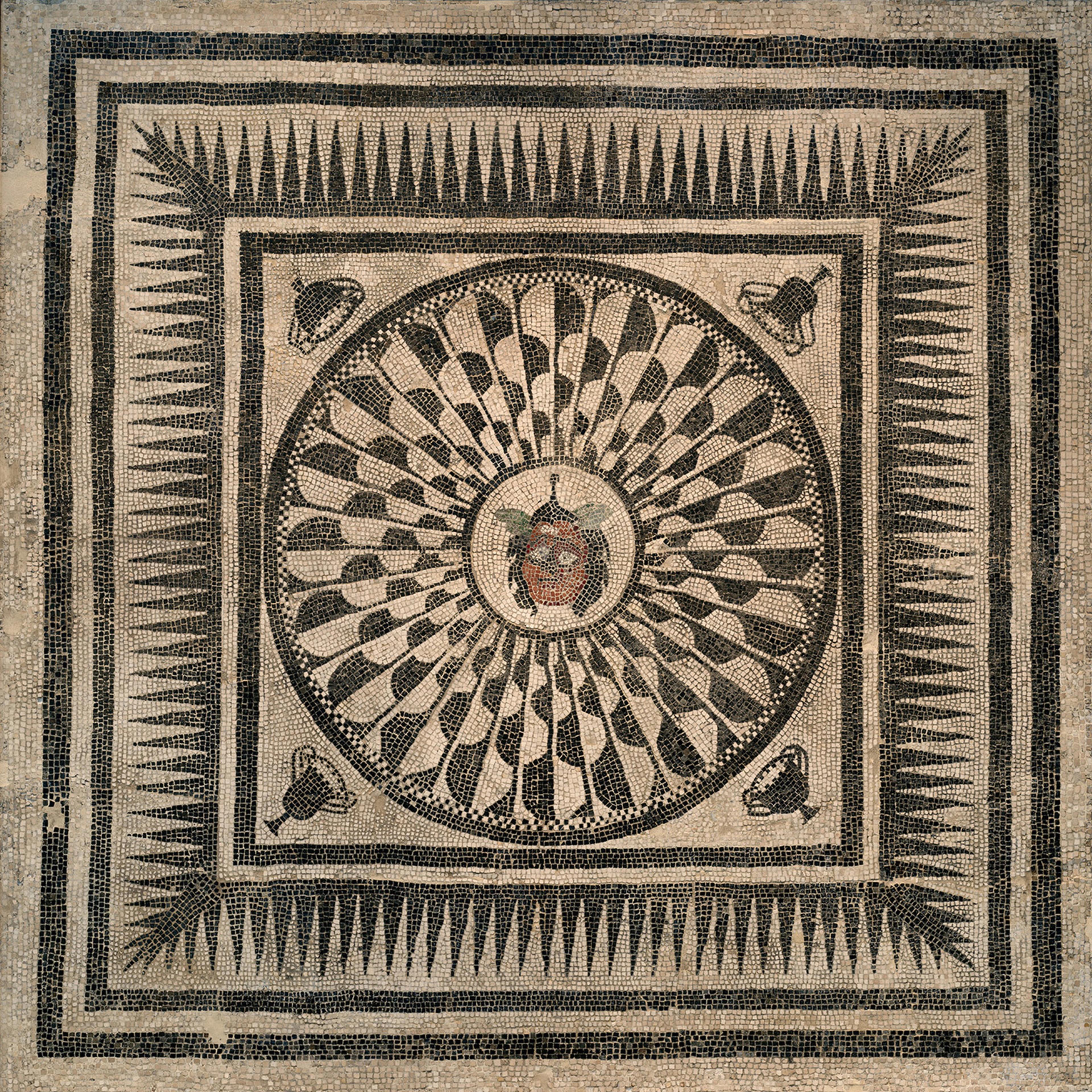
Mosaic of the House of Citharist of Pompeii, second half of the 1st c. BCE. Mosaic, 78 3/4 × 78 3/4 × 4 3/4 in., 551.2 lb. (200 × 200 × 12 cm, 250 kg). Museo Archeologico Nazionale di Napoli (MANN), (L.2024.1)
The central medallion of the mosaic depicts the Gorgon Medusa. In antiquity, Medusa's visage, with its piercing stare and snake-like hair, was derived from descriptions in Greek myths that chronicled the Gorgon’s monstrous nature and her ability to turn anyone she saw into stone. Representations of Medusa are frequently found in Roman domestic contexts—on tableware, wall paintings, and mosaics—and they likely served to avert evil and misfortune. In the House of the Citharist mosaic, her head is encircled within a shield design of black and white bipartite scales that also reference a divine protective symbol, the goddess Athena’s scaly and supernatural aegis (her cloak or breastplate).
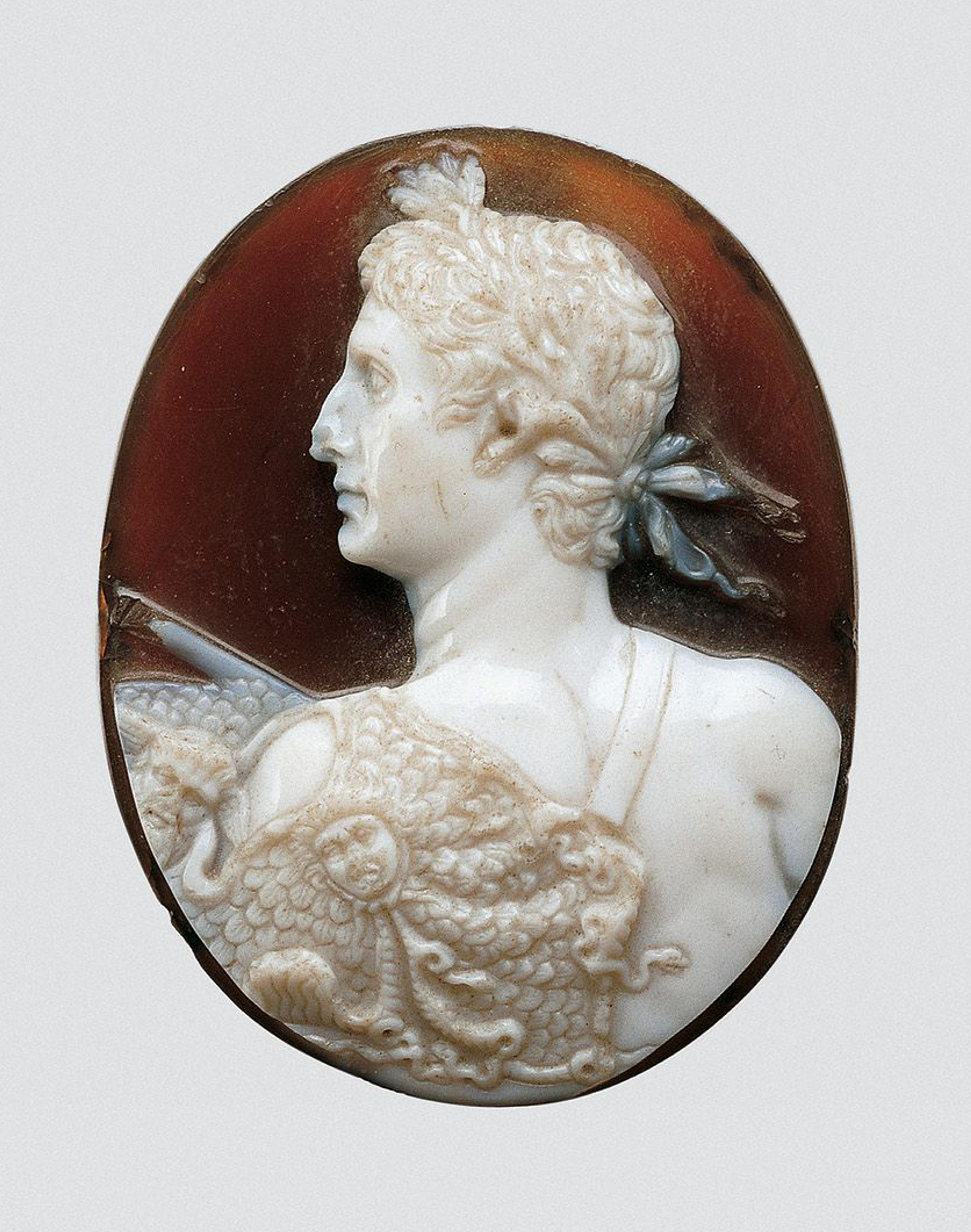
Medusa’s visage as seen worn by the Emperor Augustus on this Roman cameo. Sardonyx cameo portrait of the Emperor Augustus, ca. 41–54 CE. Sardonyx, 71 7/16 × 1 1/8 × 5/16 in. (3.7 × 2.9 × 0.8 cm). Purchase, Joseph Pulitzer Bequest, 1942, (42.11.30)
While the Imagine mosaic in Central Park serves a different purpose than its ancient predecessor, its message is no less potent. As a tribute to a beloved artist, it reinforces Lennon’s vision for hope and peace and offers visitors from across the globe a place to remember and reflect. In turn, the Central Park mosaic has inspired a larger, twenty-one-foot version in Liverpool, England, Lennon’s hometown. There, it paves the floor of a bandstand in the original Strawberry Field, marking the namesake park for the famous Beatles song and honoring the enduring power of Lennon’s life and legacy.
Notes
[1] Giuseppe Fiorelli, Gli Scavi di Pompei dal 1861 al 1872. (Napoli: Tipografia Italiana nel liceo V. Emanuele, 1873), 153; Erich Pernice, Pavimente und Figürliche mosaiken. Die Hellenistische Kunst in Pompeji, vol. 6. (Berlin: De Gruyter, 1938), 69, footnote 3; Ida Baldassarre, Pompei: Pitture e Mosaici, vol. 1, no. 1. (Rome: Istituto della Enciclopedia Italiana Fondata da Giovanni Treccani: 1990), 175.